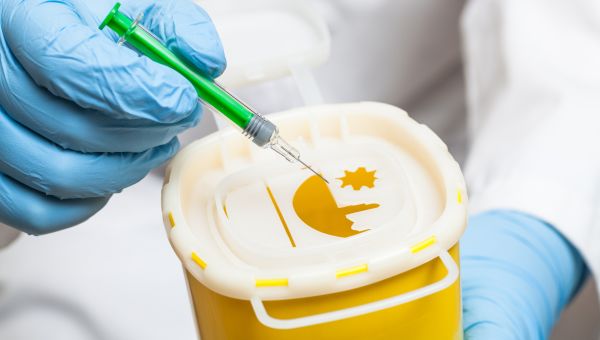How Ebola spreads
Learn the truth about your risk of getting the deadly virus.
Updated on May 16, 2024

Nearly 50 years after Ebola was first discovered in Africa, more than 15,000 people have died from the disease. Highly contagious and dangerous, it is “one of the most deadly diseases known to man,” says Keith Roach, MD, associate professor of clinical medicine at Weill Medical College of Cornell University in New York City and an associate attending physician… Show More
Nearly 50 years after Ebola was first discovered in Africa, more than 15,000 people have died from the disease. Highly contagious and dangerous, it is “one of the most deadly diseases known to man,” says Keith Roach, MD, associate professor of clinical medicine at Weill Medical College of Cornell University in New York City and an associate attending physician at New York-Presbyterian Hospital. Ebola is a type of hemorrhagic fever that can cause severe bleeding in its later stages.
Recent years have seen important developments in the ability to treat and contain the virus. There are now two treatments approved by the U.S. Food and Drug Administration (FDA), as well as one FDA-approved vaccine to prevent the disease.
The keys to avoiding infection, however, remain understanding how the disease is and is not transmitted—and taking necessary steps to lower the risk of spread. Read on for the facts.
Show Less
Beware of Bodily Fluids
You’ve probably heard by now that Ebola is contracted by coming into contact with the bodily fluids of an infected person. What do these include? Blood, urine, saliva, sweat, feces, vomit, breast milk and semen, according to the Centers for Disease Control and Prevention (CDC). Dr. Roach… Show More
You’ve probably heard by now that Ebola is contracted by coming into contact with the bodily fluids of an infected person. What do these include? Blood, urine, saliva, sweat, feces, vomit, breast milk and semen, according to the Centers for Disease Control and Prevention (CDC). Dr. Roach points out that “you can’t get sick without being in very close contact with someone who has symptomatic Ebola—which in the United States, you’re almost guaranteed not to be.”
Show Less
Steer Clear of Syringes
With so few Ebola cases in the U.S., there is an extremely low risk of being exposed to syringes and other medical equipment that has come into contact with the Ebola virus. But healthcare workers who do care for Ebola patients—both here and in Africa—should be painstakingly cautious around these… Show More
With so few Ebola cases in the U.S., there is an extremely low risk of being exposed to syringes and other medical equipment that has come into contact with the Ebola virus. But healthcare workers who do care for Ebola patients—both here and in Africa—should be painstakingly cautious around these objects, which can transmit the virus, according to the CDC.
Show Less
What About Animals?
Research suggests that bats may be a source of Ebola. The virus has also been found in monkeys and other animals in the African wild. But after the pet dog of an Ebola patient in Spain was euthanized, many wondered if domestic animals can spread the virus.
The CDC, the U.S. Department of… Show More
Research suggests that bats may be a source of Ebola. The virus has also been found in monkeys and other animals in the African wild. But after the pet dog of an Ebola patient in Spain was euthanized, many wondered if domestic animals can spread the virus.
The CDC, the U.S. Department of Agriculture, and the American Veterinary Medical Association don’t believe that pets are at much risk for Ebola in the U.S.—and there have been no reports of dogs or cats becoming sick with Ebola or of spreading the virus.
Show Less
Practice Abstinence
Even when a man recovers from Ebola, the virus can still be in his semen for up to three months or perhaps even longer. Experts recommend abstinence from sex (including oral sex) until tests confirm that the virus is no longer present in semen. And if you are at all concerned that you or a loved… Show More
Even when a man recovers from Ebola, the virus can still be in his semen for up to three months or perhaps even longer. Experts recommend abstinence from sex (including oral sex) until tests confirm that the virus is no longer present in semen. And if you are at all concerned that you or a loved one have been exposed to the virus, keep in mind that it can take Ebola symptoms two to 21 days to develop. You have to be symptomatic (have symptoms) to be contagious, Roach says.
Show Less
How Ebola is Not spread
Are you worried you could contract Ebola when a person sits next to you with a runny nose? When you eat at a restaurant? When you swim laps at the gym?
Keep in mind: Coughing and sneezing aren’t likely symptoms of Ebola and the virus is not spread by water, or in general, by food. “Fortunately, in… Show More
Are you worried you could contract Ebola when a person sits next to you with a runny nose? When you eat at a restaurant? When you swim laps at the gym?
Keep in mind: Coughing and sneezing aren’t likely symptoms of Ebola and the virus is not spread by water, or in general, by food. “Fortunately, in the U.S., the likelihood of being exposed to the virus is almost zero,” Roach says.
Show Less
Centers for Disease Control and Prevention. Ebola Disease Basics. April 23, 2024.
Cleveland Clinic. Ebola Virus Disease. Last reviewed on November 22, 2023.
